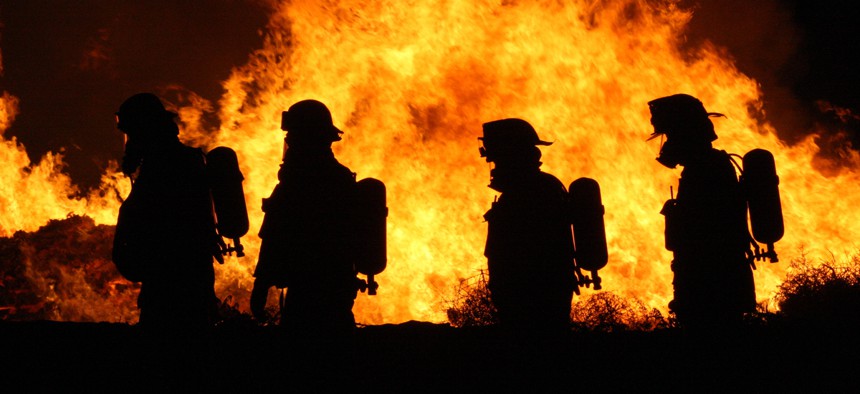Tracking Cancer Among Firefighters

The registry was prompted by a multi-year study that found increased rates of certain cancers among firefighters but was hamstrung by limited data. Shutterstock
The National Firefighter Registry seeks to collect detailed information on cancer rates within the profession with the goal of improving research.
The federal government is poised to start recruiting firefighters to participate in a registry to collect information on cancer rates in the profession, with the goal of amassing a more comprehensive pool of data to assist researchers in studying the problem.
“We know there’s a significant increase in cancer in the fire service. The data will allow researchers to really hone in on where those cancers are coming from,” said Patrick Morrison, assistant to the general president for occupational health, safety and medicine with the International Association of Fire Fighters. “We really feel like this information is the piece we’re missing, and it’ll give us a better handle on the protection we need for firefighters.”
The National Firefighter Registry, managed by the Centers for Disease Control and Prevention, was created by Congress in 2018 to “collect history and occupational information that can be used to determine the incidence of cancer among firefighters.”
That information, submitted periodically by participants, will include demographics, length of career, the number of fires attended and addition risk factors, including smoking and drug usage. Participation is voluntary and all information will remain anonymous.
The project comes four years after the completion of a multi-year study that found increased rates of cancer among firefighters but was “limited by the inclusion of only small numbers of women and minorities, and a lack of data on volunteer firefighters,” according to the CDC’s website. The registry aims to fix that by including firefighters from a variety of departments—urban, rural, on-call, volunteer—with an emphasis on women and minorities.
Once collected, the data will be matched against state and national registries to determine causes of death and types of cancer among firefighters and evaluate how they compare to the general population. In addition to improving research on cancer rates, the data will be used “to raise awareness about better ways to protect firefighters from known cancer risks, including advancements in the design and care of personal protective equipment and practices that can lower firefighters’ exposure to hazardous substances.”
That could mean the development of new gear, or just making sure that firefighters have a way to thoroughly and properly clean their existing equipment, which gets coated in dangerous substances that can linger long after a fire has been extinguished.
“We’re concerned about flame retardants, we’re worried about anything that’s been treated with stain resistance,” Morrison said. “We lose more firefighters from cancer than we do almost anything else. This will help researchers have an opportunity to look at this info and get this trend going the other way.”
Recruitment is likely to be easy, Morrison said, as most professional organizations supported the bill and many firefighters are eager to understand the health risks posed by their jobs.
“We’re just in year one and we’re already seeing firefighters calling up and wanting to be a part of it,” he said. “There is not a firefighter you could call today that doesn’t know of another firefighters that came down with cancer. This is probably the single biggest health issue going on with firefighters across the country.”
Kate Elizabeth Queram is a Staff Correspondent for Route Fifty and is based in Washington, D.C.
NEXT STORY: What Happens When a Big Business Tries to Take Over and Rename a Neighborhood





